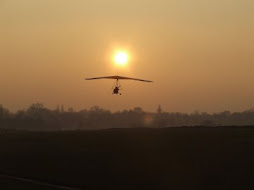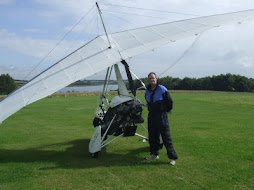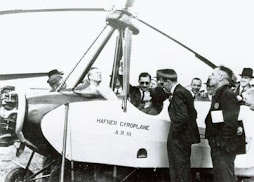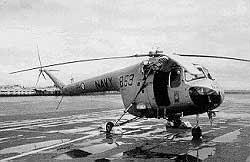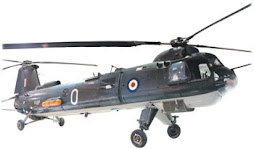
As an aside, watch Bill and Ben, the Flowerpot Men (BBC, 1953),
as only anyone of my generation will remember where obalob comes from.
(whiz past first three minutes)

I cut the base off one and slit it top to bottom. Then I colour copied 2xA4 views from my 1/4mil chart of England South, stuck them together and laminated them (interleafing two A4 pouches carefully to make a longer one), mounted the chart around the pot with duck tape and then tightened the pot around my suited leg, securing it with a final bit of tape (in the final version I think velcro might be more suitable).
Ordinarily, I could expect to get a map of the route from Sutton Meadows to Sackville on one leg, but my new method allows a flight North-South from say Sutton to Peterborough or East-West from Sutton to Leicester. That isn't a massive distance (45 x 25 Nautical Miles), granted, but one leg-map would cover all my favourite airfields, including Sackville, Sywell, Leicester, Bakersfield, Deenethorpe, Grafton Underwood, Kimbolton, Chatteris, etc. And for a novice like myself, that is more than enough to be getting on with while I hangar at Sutton for the next few months. (see 2nd Update below!)
I will risk the ridicule. It is a "potty" solution but an efficient one, which will allow me good access to undercarriage controls and a clear view of the countryside below me and instruments in front.
Update
I have now fitted it out with velcro, so that it is fully functional; no longer just a prototype. I made a point of putting the fluffy side closest to my leg (wrapping a length of it along the inner and outer of the rough edge), so that the inner surface will slide easily against my suit. I will secure it on top of my leg then just slide it round. Simple.

2nd Update
While fixing the pot to my leg just now, I realised that I still have room for another 35 or 40 nautical miles under my leg (near the fixing velcro)! This could be a different route . . . leg, if you like, ahem. . . or the space could be used for landing / circuit info for the destination!
Sweet as a nut!
.
While fixing the pot to my leg just now, I realised that I still have room for another 35 or 40 nautical miles under my leg (near the fixing velcro)! This could be a different route . . . leg, if you like, ahem. . . or the space could be used for landing / circuit info for the destination!
Sweet as a nut!
.
























































